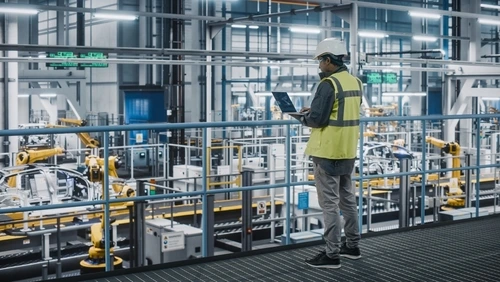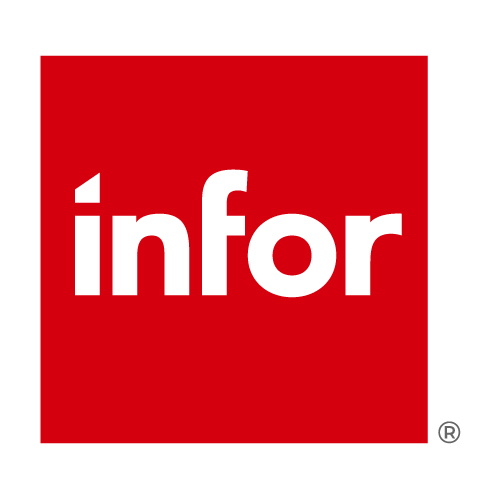
While recent advances in ERP (enterprise resource planning) solutions have the potential to revolutionise operations in the manufacturing sector, limitations of older ERPs have been exposed by the scale of change already underway. Manufacturers have long been persuaded of the business-critical nature of having an ERP platform, but with the drive towards increasing digitisation, education is required around what their solution should now be capable of doing.

How should a business go about choosing the right platform? Are the questions asked of an ERP system installed a decade ago different from the questions that need to be asked now? We live in an age of connected machines and products, data, analytics, skills shortages, and competitors pivoting towards smart manufacturing processes. In such an environment, manufacturers need to consider whether their current solution is fit to reflect these new realities.
According to Andrew Kinder, SVP of industry strategy at cloud management specialists Infor, modern ERPs are much more capable of managing issues facing the manufacturing sector, and as such are better suited to adaptability within an ever-changing business environment.
“The key difference is that the modern ERP is about much more than just operational control,” Kinder says. “It’s about delivering a competitive advantage. In this sense, it’s useful to think of ERP as a part of the fabric of manufacturing itself.”
ERP functionality
When evaluating capabilities for a modern ERP, Kinder advises a deep dive into six areas: supply chain; product life cycle; productivity; people; autonomous decision-making; and, most importantly, how to better serve customers.
“Top of that list for most manufacturers would undoubtedly be collaboration within the supply chain,” Kinder says. “Collaboration means sharing key data with customers and suppliers live and in real time so that you can become a better supplier to your customer and suppliers can better respond to your changes in demand.”
Product life cycle is about bringing new products to market faster and being able to keep up with changing customer needs. “Digitisation plays a big part here,” continues Kinder, “with increasingly smarter products being able to inform engineers on how the product is performing in the field and adjusting the design accordingly.”
Manufacturers are also under constant pressure to show continual improvements in productivity. From a manufacturing standpoint, modern ERPs can play a critical role on the plant floor, as well as in the back office.
“Modern solutions remove the need for paper, thereby increasing speed, accuracy and the elimination of waste – all leading to improved productivity in addition to a better ESG rating,” says Kinder. “It can also advise on the effectiveness of operating equipment, which machines need to be serviced, and when inspections or compliance reviews are likely to happen. All of which is available in real time.”
Fourth is people. “From an employee perspective, modern ERPs incorporate HR, recruitment, skills training and skills retention,” Kinder says. “It ensures that employees have access to data of personal importance; that is, pension rights, holiday entitlement, contract terms and internal communications, making it easier for them to oversee and manage their workload more effectively.”
Closely connected with people is decision making: “Modern ERP is ultimately a rich repository of data from which quality insights can be generated to help people make better decisions, faster. In addition, the right system can automate some of the less glamorous tasks within the employee’s work processes, creating time for more value-added work that helps the business grow.”
Finally, but most importantly, a modern ERP should ensure you can service your customers better. Indeed, from the perspective of delivering personalised customer offerings, Kinder says that the right ERP allows for the configuration of orders where customers can make their own choices about their product purchase; that is, colour, size, style, etcetera. A trend that has become known as ‘servitisation’.
Supporting digital transformation
Ultimately, Kinder advises that businesses choose an ERP focused on solving problems within their specific industry. He also advises that ERPs should be operated as a cloud service, whether that’s public, multi-tenant or private. A cloud-based solution means that smaller manufacturers, who would traditionally not have had the budget to install an industry-leading solution on-premises, can now leverage solutions such as machine learning (ML) and AI, which would have previously been unavailable to them.
“SaaS represents the lowest ERP cost entry point for manufacturers,” he says. “You avoid service costs, hardware costs and, most importantly, enlarged IT teams. Without hardware, you can focus on what matters to you as a manufacturer and, as such, you don’t need a big IT team. The team you do have are able to focus on managing the data that your business depends on and advising on innovation, rather than managing the system. That’s our job: Software as a Service.
“Legacy ERP can hold back innovation,” contends Kinder. “If you have an on-premises ERP, upgrades are required every 12 to 18 months, and then the clock starts again. It’s inefficient and expensive. You don’t do this with SaaS, which means you are always current and compliant.”
Security is also a top concern for businesses, but it is now widely accepted that the cloud is much more secure than on-prem. “Companies like ours, AWS and others, spend big on security. It’s in our interest to make sure that everything is airtight and, from that perspective, you know that you have a whole other team fighting in your corner,” says Kinder.
“The integration of machine learning into the modern ERP is another benefit not previously available on older non-cloud platforms. Chatbots can be deployed to answer customer queries, orders can be updated and fulfilled in real time, and the collection and analysis of data – which once might have served as a laborious extra on top of an employee’s other duties – can now be carried out by the ERP itself in an automated way.”
With AI and ML tools constantly growing in sophistication, the right cloud-based solution empowers manufacturers to keep up to speed with the latest developments and capabilities. “The criteria by which we evaluate an ERP has changed and selection processes need to adapt to this,” concludes Kinder. “By evaluating an ERP on its ability to harness the power of digital technologies rather than just ‘procure-to-pay’ or other core business processes, manufacturers will set themselves up for continuous innovation and business agility.”








